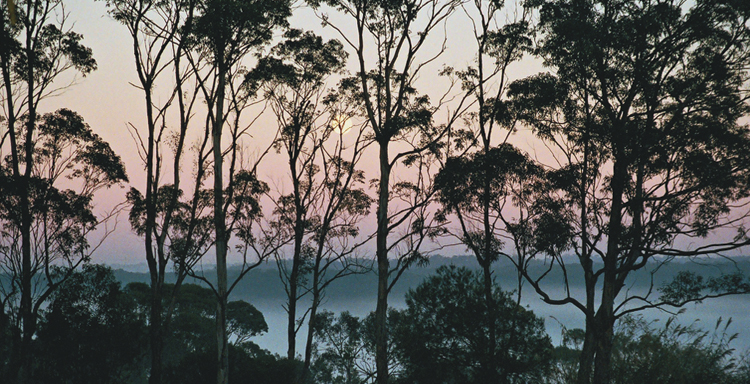There is very little of Australia that is as it was before the arrival of the First Fleet and its successors and their deadly cargo: the rat, the rabbit, the dog and the cat. The Waratah Park Earth Sanctuary is a gem of flourishing wild life 30 minutes from Sydney’s CBD. It’s 30 acres of enclosed bush-land has been transformed into a wonderfully rich native habitat.
Waratah Park started as the set of the children’s TV series, Skippy the Bush Kangaroo. After the series ended both the set and the animals used in filming remained. Over the years the place deteriorated, unsure whether it was an animal sanctuary, a petting zoo, or a movie set. Eventually, in 2003, Waratah Park was taken over by Earth Sanctuaries Limited who have a track record of restoring native wildlife habitats.
The transformation is complete. The degraded landscape has been regenerated as native bush, and a feral animal exclusion fence has been erected around the park. A short, sharp purge was undertaken to remove all non-native animals from the park, and naturally-occurring native animals have been re-introduced and allowed to roam free.
The result is a richly-abundant fauna that is growing from strength to strength. They have a breeding pair of koalas, a pair of dingoes, a most charming and friendly emu called Ernie and several different kinds of kangaroo, wallaby and their smaller and shyer cousins.
Take the Rufous Bettong. A bettong resembles a very small wallaby, and is between a rat and a rabbit in size. No match for the rat or the rabbit, a shy creature, it was even less of a match for the foxes, dogs and cats. Once as common in the Sydney Sandstone Basin as rabbits are today in rural Australia, the population was almost wiped out. At Waratah Park they are thriving again, a shining example of successful protection.
The Park has become a magnet for researchers needing to study Australian fauna in a natural environment, with a large enough population to be able draw broad conclusions, yet controlled enough to permit accurate measurement of both the animals and their environment.
Recognising that a certain amount of interaction between human and animal, properly conducted, can win hearts and minds, Australia’s most famous animal trainer has joined the park to train a handful of native species to be less shy of humans. Peta Clarke said, “I joined in November 2005 to do the same kind of work I did in Taronga Zoo”. She refers to the famous bird show that is a huge crowd-pleaser. “I believe that humans and animals can learn to respect one another, and only when they do respect each other will you get a true interaction. At Taronga we let the animals express their own personalities, and construct the show around them, and it is a sure-fire winner”.
The park has a zoo licence (allowing animals to be confined in cages) that permits them to carry species that might otherwise prove incompatible. Dingoes and quolls, for example, are natural predators of most of the other animals there and are kept separately. Wombats on the other hand, although relatively benign creatures, are champion diggers and would by-pass the anti-feral fences in no time. And then it would be all to do again. So the wombats are kept in large concrete-walled paddocks, with foundations down to the bedrock.
These animals, and the koalas, are kept in the zoo area near the gates, and this suits the visitor who does not want the guided tour, while the remaining 90% of the park is given over to the other animals to roam at will.
Those visitors who want the escorted guided tours can look forward to 90 minutes with plenty of stops to approach the tamer animals and learn something of their fascinating lives. The native plants are also not neglected. You will become familiar with their names and their traditional uses for medicine and food by man and animal alike.
Restoration of the native habitat and of its native fauna and flora is a costly exercise. Paying visitors are welcome. 02 9986 1788.
Adults $16, kids $11.
Waratah Park is at 13 Namba Road, Duffys Forest, near Terrey Hills.
